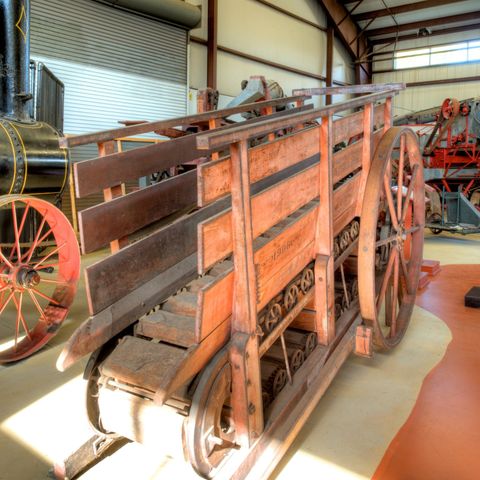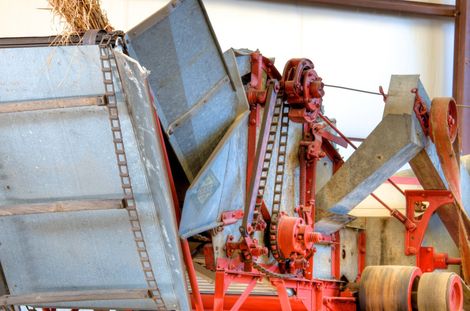Harvesting
HARVESTING
Before the advent of the threshing machine in the 18th century, the work of removing seeds from stalks and husks was one of the most time-consuming and back-breaking tasks on a farm. It was done by hand with flails and accounted for almost a quarter of agricultural labor. While a blessing to the individual farmer, the mechanization of the threshing process resulted in the displacement of thousands of farm workers.
The early threshing machines were horse powered and hand fed and plagued by the inefficiency of throwing the separated grain together with the straw and chaff into an indiscriminate pile. By adding rakes and fanners to the thresher, the grain was immediately separated and ready for market. The first sophisticated thresher capable of doing the separation was the steam-powered thresher created by Isaiah Jennings. This machine was significantly improved by two American inventors, John Avery and Hiram Abial Pitts, who in 1837 received United States patent #542 for a machine that automatically threshes and separates grain from chaff.2
Throughout England, where Scottish engineer Andrew Meikle invented the threshing machine around 1836, riots broke out among the farm workers who suffered unemployment and starvation because mechanized farming was making them unnecessary. Where once many men were needed for tasks such as threshing, now only a few would do.1


